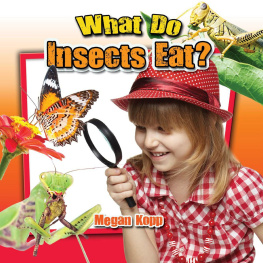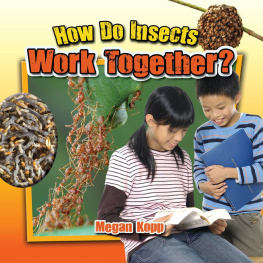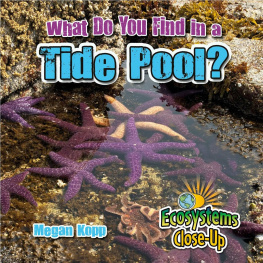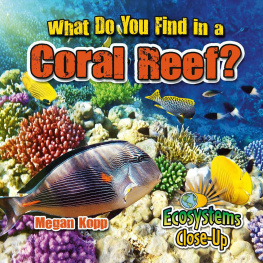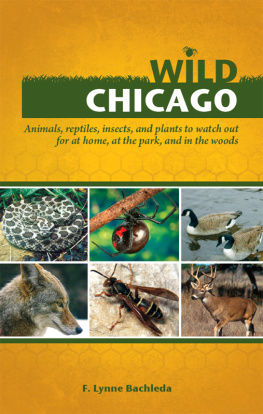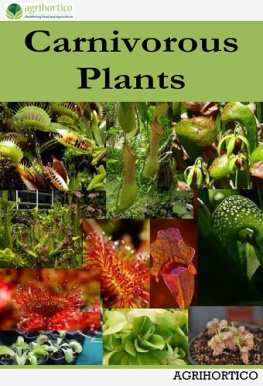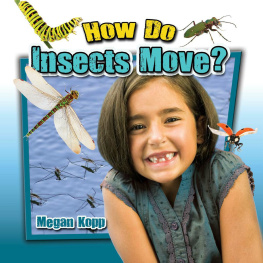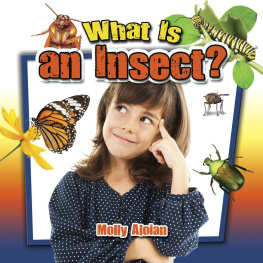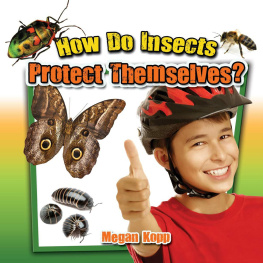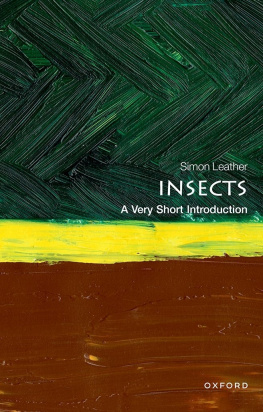
Crabtree Publishing Company
www.crabtreebooks.com

Author
Megan Kopp
Publishing plan research and development
Reagan Miller
Editor
Shirley Duke
Proofreader and indexer
Crystal Sikkens
Design
Samara Parent
Photo research
Tammy McGarr
Prepress technician
Tammy McGarr
Print and production coordinator
Margaret Amy Salter
Photographs
Thinkstock: pgs 4 (bottom left), 6 (top right)
Wikimedia Commons: pg 18
All other images are from Shutterstock
Library and Archives Canada Cataloguing in Publication
Kopp, Megan, author
What do insects eat? / Megan Kopp.
(Insects close-up)
Includes index.
Issued in print and electronic formats.
ISBN 978-0-7787-1973-1 (bound).--ISBN 978-0-7787-1977-9 (pbk.).--
ISBN 978-1-4271-9039-0 (pdf).--ISBN 978-1-4271-9035-2 (html)
1. Insects--Food--Juvenile literature. I. Title.
QL467.2.K675 2015 j595.7 C2014-907833-1
C2014-907834-X
Library of Congress Cataloging-in-Publication Data
Kopp, Megan, author.
What do insects eat? / Megan Kopp.
pages cm. -- (Insects close-up)
Includes index.
ISBN 978-0-7787-1973-1 (reinforced library binding) --
ISBN 978-0-7787-1977-9 (pbk.) -- ISBN 978-1-4271-9039-0 (electronic pdf) --
ISBN 978-1-4271-9035-2 (electronic html)
1. Insects--Food--Juvenile literature. 2. Insects--Behavior--Juvenile literature.
I. Title.
QL467.2.K674 2015
595.715--dc23
2014045638
Printed in Canada/042015/BF20150203
Published in Canada
Crabtree Publishing
616 Welland Ave.
St. Catharines, Ontario
L2M 5V6
Published in the United States
Crabtree Publishing
PMB 59051
350 Fifth Avenue, 59th Floor
New York, New York 10118
Published in the United Kingdom
Crabtree Publishing
Maritime House
Basin Road North, Hove
BN41 1WR
Published in Australia
Crabtree Publishing
3 Charles Street
Coburg North
VIC 3058
Crabtree Publishing Company
www.crabtreebooks.com 1-800-387-7650
Copyright 2015 CRABTREE PUBLISHING COMPANY . All rights reserved. No part of this publication may be reproduced, stored in a retrieval
system or be transmitted in any form or by any means, electronic, mechanical, photocopying, recording, or otherwise, without the prior written permission
of Crabtree Publishing Company. In Canada: We acknowledge the nancial support of the Government of Canada through the Canada Book Fund for our
publishing activities.
Synchred Read-Along Version by:
Triangle Interactive LLC
PO Box 573
Prior Lake, MN 55372
ISBN-13: 978-1-68444-575-2 (e-book)

Contents
What are insects? 4
Do all insects eat the same food? 6
Chewers 8
Chewing carnivores and herbivores 10
Nectar-sippers 12
Blood-suckers 14
Sap-suckers 16
Spongers 18
Changers 20
Compare and contrast 22
Learning more 23
Words to know and Index 24

What are insects?
Insects come in different shapes and sizes. Butterflies
are insects. They dont look anything like beetles.
Beetles are insects, too. Aphids are tiny insects.
They are much, much smaller than a pencil eraser.
Dragonflies are large insects. Their wingspan can be
half the length of a pencil.
There are millions
of different insects
in the world.

All about insects
All insects have hard, shell-like skeletons that cover the
outside of their bodies. This is called an exoskeleton .
Insects have three body parts, two antennae , and six
legs. Almost all insects have four wings. Most insects
have four stages in their lives egg, larva , pupa , and
adult. Some insects dont have a pupa stage.
Some insects have
colorful bodies.

Do all insects
eat the same food?
Some insects live underground. Some live buried
beneath tree bark. Others live in the water. Insects
are found in many different
environments . They also
eat many different types of
food. Some insects eat plants.
Some eat meat. Others drink
nectar from flowers.
Some insects eat
other insects.
Butteries
drink nectar.

Supper time!
Over time each kind of
insect has developed
special mouthparts that
allow it to feed. Some
insects have powerful jaws.
They bite and chew their
food. Other insects suck up
their food. Chewing insects
and sucking insects have
special features depending on
what type of food they eat.
Would you use a fork to eat
soup? Do you think it
is important for insects
to have the right tools
to eat their food?
Explain.
What do you

Chewers
mandibles
Insects dont have teeth. Instead, chewing insects
have powerful jaws made up of two mouthparts called
mandibles. Mandibles are used for grabbing, holding,
and chewing food.
All insects have hard
exoskeletons. Why is it
important for dragonies
and ladybugs to have
strong mandibles?
What do you

